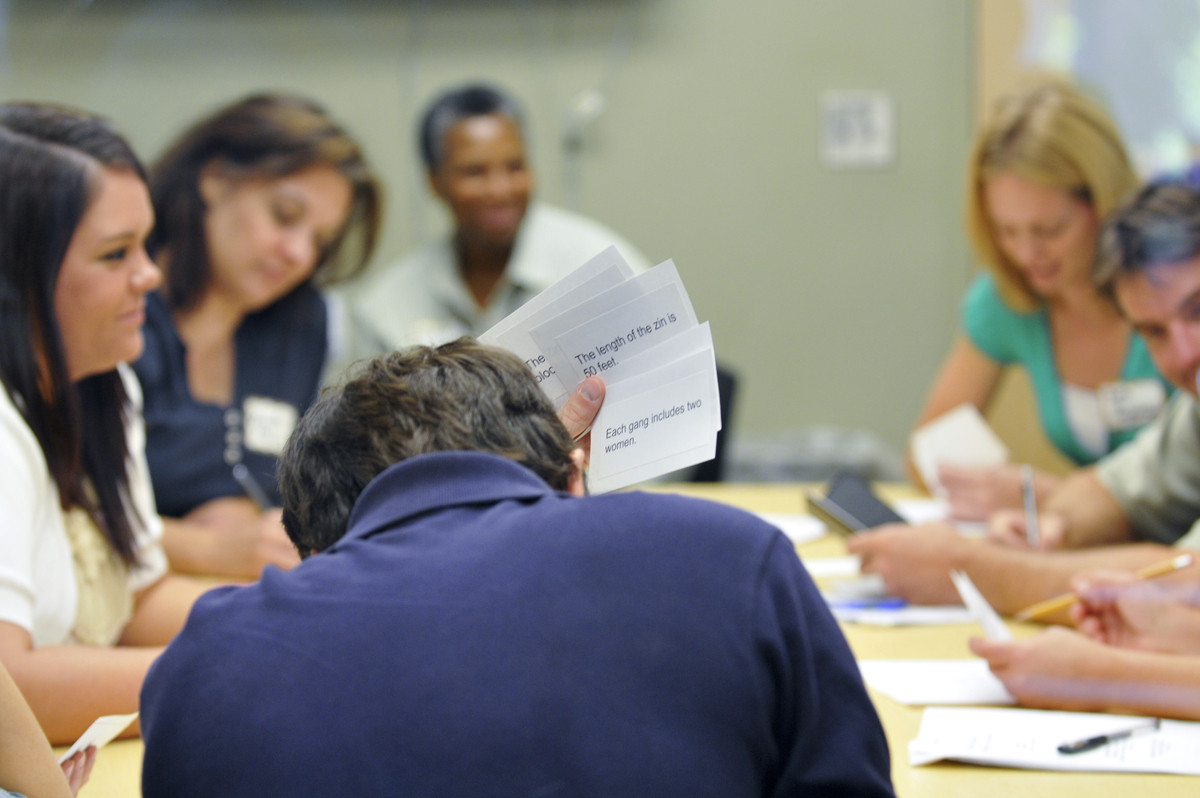
A nursing student begins her examination of a simulated patient, checking his vital signs and asking questions about his health. It strikes her for the first time that the med student standing just outside the room is counting on her assessment to make his diagnosis. “It’s important I do a good job and collect all the information I can,” she thinks. The med student, observing his colleague, is surprised to see how much she does and impressed by her ability to simultaneously collect data and take care of the patient.
Exercises like this are part of a new training program at the University of Washington to educate medical, nursing, pharmacy and physician assistant students on how to work as a team to provide high quality care.
“Traditionally, each health profession trains its students in separate classes, using separate simulation,” explains Brenda Zierler, PhD, RN, FAAN of the University of Washington School of Nursing. “Students graduate and then go work with another discipline for the first time. They have no idea what their colleagues learn.”
With a grant from the Josiah Macy Jr. Foundation, the University of Washington developed a simulation-based training program to provide its health professions students with the skills needed to effectively collaborate on patient care. “After they go through our training, students have more respect for their colleagues and see the importance of working together,” say Zierler. “They understand how teamwork can benefit both them and the patient.”
Team-Based Training
The training focuses on four areas: values and ethics; roles and responsibilities; team communication; and teamwork. Rather than putting students from different disciplines in a classroom together and simply lecturing them on these topics, the students get to experience them firsthand by participating in two simulation scenarios:
Error disclosure and early apology team training
Nearly 500 medicine, nursing and pharmacy students gather for a four-hour session to talk about disclosing errors as a team. After a brief presentation and demonstration, students break out into groups with a faculty member and an actor playing the daughter of an elderly patient. The students must tell the family member that they gave her father the wrong medicine and that is why he is on an incubator. In this scenario, the nurse gave the patient medication, the doctor prescribed it and the pharmacist dispensed it—everyone is equally responsible for the error yet often the tendency in such situations is to place the blame on one individual. Each student must talk about their contribution and apologize for the mistake. In addition to learning error disclosure skills and practicing how to apologize for the outcome, the exercise of explaining and consoling family members helps students learn how to work effectively as a member of a team.
Acute and chronic simulation scenarios
In their capstone year, more than 500 students from the nursing, medicine and pharmacy schools and the physician assistant training program are brought together over a two-day period to practice working as a team. The students gather at simulation labs at the University of Washington Medical Center and Harborview Medical Center and are presented with three health care scenarios: an adult with a chronic health problem such as asthma or heart failure, a patient who hemorrhages after delivering a baby, and a pediatric case. Using human simulators and standardized actors, the students must work together to diagnose and treat their “patients.” The exercises test the students’ communication skills, requiring them to transfer and collect information from each other in order to provide the right care. The cases get more complicated as the training progresses, increasing the risk of a breakdown in communication and teamwork—the number one cause of medical errors.
Faculty, staff and students spent two years developing and piloting the training program. The University will be officially rolling it out this year. The University is also working on plans to engage all of its health professions schools—including dentistry, public health and social work—in interprofessional trainings, as well as developing primary care scenarios, knowing that not all their students will end up working in an acute care hospital.
Faculty Development
Looking ahead, the University recognizes that to sustain and expand its interprofessional education program it must engage more faculty. In 2011, it launched a teaching scholars program, convening eight faculty members on a regular basis over nine months to learn more and teach each other about interprofessional education. In addition, the scholars must work on a capstone project, developing a new teaching case with an IPE element or adding IPE content to a training module, which can be integrated into the existing health professions curriculum.
Expanding Interprofessional Education
An increasing awareness of the positive impact of team-based care on patient safety and outcomes has spurred interest in interprofessional education. Zierler is flooded by inquiries from other institutions looking to replicate the University of Washington’s program. To assist in this effort, the University invites faculty from across the country to participate in its team-based simulation scenarios, training them as facilitators or engaging them as observers, so they can apply the experience and replicate the training for the students in their own institutions. The University has also developed an Interprofessional Educator’s Toolkit, providing instructors with the content and materials needed to bring the simulation-based team training program to their schools.